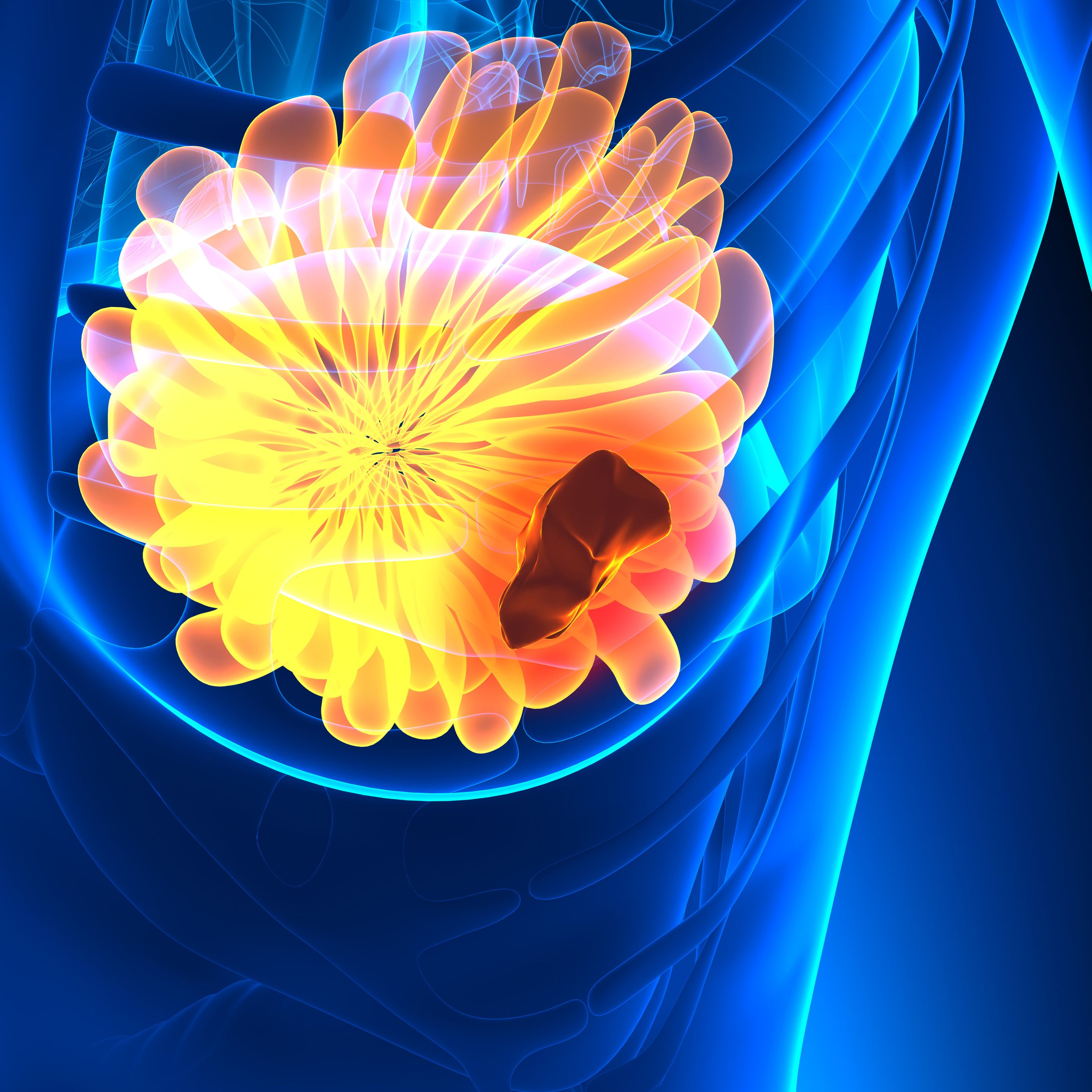Serum Hormone Concentrations may Help Breast Cancer Risk Management
Data from a case control study highlight a decrease in the risk of breast cancer among those with increasing sex hormone binding globulin concentrations.
"These data provide support for the hypothesis that preventive therapy with an aromatase inhibitor is likely to be most effective for [patients] with higher estradiol–SHBG ratios and, conversely, of little or no benefit for those with low estradiol–SHBG ratios," according to the study authors.

Routinely measuring serum hormones in postmenopausal individuals appears to be inexpensive and may assist practices in identifying those who may benefit most from treatment with an aromatase inhibitor for the prevention of breast cancer, according to findings from a case-control study using data from the IBIS-II prevention trial (ISRCTN31488319).
The median estradiol-sex hormone binding globulin (SHBG) ratio was 0.36 (IQR, 0.20-0.74) among patients with breast cancer and 0.28 (IQR, 0.17-0.62) among controls. Additionally, the median testosterone-SHBG ratio was 0.013 (IQR, 0.090-0.019) and 0.011 (IQR, 0.008-0.017) for cases and controls, respectively.
Investigators noted a relative benefit of 0.49 (95% CI, 0.32-0.62; P <.0001) with anastrozole compared with placebo. Data showed an increase in the risk of breast cancer with rising estradiol-SHBG ratios in the placebo group (trend per quartile, 1.25; 95% CI, 1.08-1.45; P = .0033) but not among those who received anastrozole (trend per quartile, 1.06; 95% CI, 0.86-1.30; P = .60). Investigators did not identify a significant relationship between estradiol-SHBG ratio and treatment (P = .20).
A significant relationship between breast cancer risk and testosterone-SHBG ratio was observed in the placebo group (trend, 1.21; 95% CI, 1.05-1.41; P = .011) but not among patients treated with anastrozole (trend, 1.18; 95% CI, 0.96-1.46; P = .11). Additionally, investigators found no evidence suggesting a significant interaction between treatment and testosterone-SHBG ratio (P = .85).
“The results from the placebo group of this study confirm the increasing risk of breast cancer associated with higher estradiol and testosterone concentrations, and a decreasing risk associated with increasing SHBG concentrations in [patients] who were not randomly allocated to receive anastrozole,” the study authors wrote. “These data provide support for the hypothesis that preventive therapy with an aromatase inhibitor is likely to be most effective for [patients] with higher estradiol–SHBG ratios and, conversely, of little or no benefit for those with low estradiol–SHBG ratios.”
In the IBIS-II prevention trial, women were randomly assigned 1:1 to receive anastrozole at 1 mg per day orally or matched placebo for 5 years. Investigators selected 2 controls without breast cancer and matched them with each patient with breast cancer based on allocated treatment, age, and follow-up time for hormone analyses. The primary outcome of this case-control study was the development of histologically confirmed breast cancer. Secondary outcomes included estrogen receptor (ER)–positive breast cancer and breast cancer developing prior to or following 5.5 years from treatment randomization.
Postmenopausal women who were 40 to 70 years old with an increased risk of developing breast cancer were eligible for enrollment across 153 breast cancer treatment centers in 18 countries. Those with a previous diagnosis of breast cancer or current or planned use of hormone replacement therapy were ineligible for inclusion.
The trial included 3864 women, 1920 of whom received anastrozole and 1944 of whom received placebo. During treatment, 85 and 165 patients in the anastrozole and placebo groups, respectively, developed breast cancer. The case-control study included 72 cases and 140 matched controls in the anastrozole group and 142 cases and 274 matched controls in the placebo group.
Among the cases and matched controls in the anastrozole and control groups, anywhere from 7.2% to 9.2% of individuals had a 10-year Tyrer-Cuzick breast cancer risk, and 23% to 31% had breast cancer in a first-degree relative.
Overall, 75% (n = 46/61) and 81% (n = 102/126) of those with a known hormone receptor status in the anastrozole group and placebo group, respectively, had ER-positive breast cancer. A trend in ER-positive breast cancer incidence based on estradiol-SHBG ratios was observed among the placebo group (1.32; 95% CI, 1.11-1.59; P = .0018) but not the anastrozole group (1.05; 95% CI, 0.81-1.37; P = .69). With respect to testosterone-SHBG ratios, a slightly higher risk of ER-positive breast cancer was highlighted in the placebo group (1.34; 95% CI, 1.12-1.60; P = .0013) than the anastrozole group (1.26; 95% CI, 0.97-1.65; P = .085).
Reference
Cuzick J, Chu K, Keevil B, et al. Effect of baseline oestradiol serum concentration on the efficacy of anastrozole for preventing breast cancer in postmenopausal women at high risk: a case-control study of the IBIS-II prevention trial. Lancet Oncol. 2024;25:108-116. doi:10.1016/S1470-2045(23)00578-8